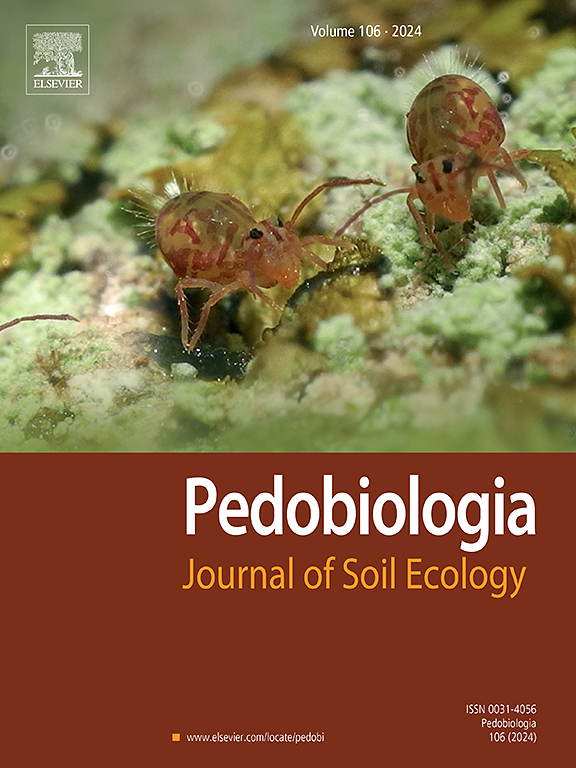Taxon-specific ability of saprophagous soil macrofauna to reintegrate carbon from agricultural waste into soil
Abstract
Saprophagous soil macroinvertebrates may potentially degrade agricultural wastes. However, it is not known, to what extent and representatives of which taxa may help reintegrating carbon from crop residues back into soil without triggering massive carbon release into the atmosphere. To tackle this problem, we conducted a three-month-long microcosm experiment with 21 different species of macrofauna (each treatment replicated four times) belonging to 13 families to test their ability to degrade wheat straw. Simultaneously CO2 release from the microcosms was measured. Five species did not survive under experimental conditions. Among the remaining 16 species, three significantly increased wheat straw decomposition with Oryctes nasicornis larvae having inflicted the highest straw mass loss (64%) in comparison with the control, where no animals were added (29%). None of the tested species increased cumulative CO2 evolution from the microcosms, while two species significantly reduced it. The reduction of carbon loss with aerobic respiration was recorded for Cetonia aurata larvae and the earthworm Dendrobaena veneta (respectively 2.5 and 2-fold in relation to the control – 53.8±4.6 mg CO2-C g−1 soil dry weight during the entire experiment). The original integrative Carbon Sequestration Index by Macrofauna (CSIM) calculated for both of the measured parameters suggests that the woodlouse Armadillidium vulgare and to a smaller extent the earthworm D. veneta appear to be the most promising organisms for industrial climate-friendly organic waste recycling in terms of survival, straw processing and simultaneous reduction of CO2 emissions from soil. Our results proved that the engagement of saprophagous macrofauna in crop residue decomposition is a viable technique of carbon reincorporation into the soil. It is accompanied with CO2 release mitigation into the atmosphere.

 求助内容:
求助内容: 应助结果提醒方式:
应助结果提醒方式:


